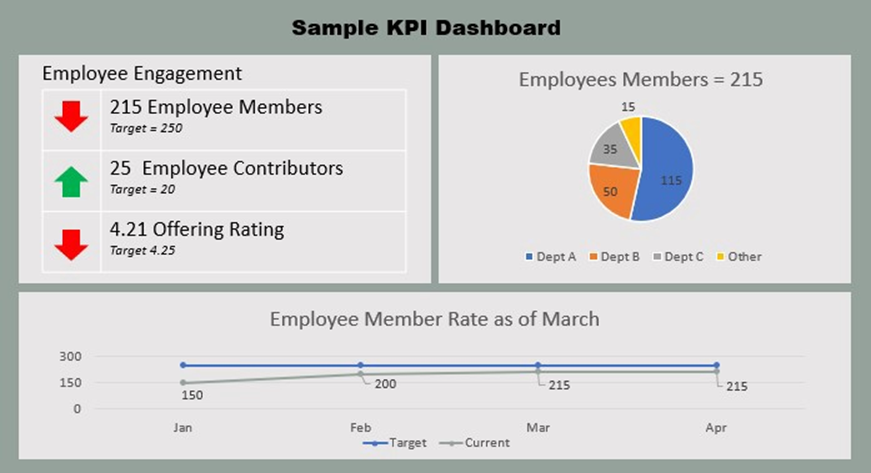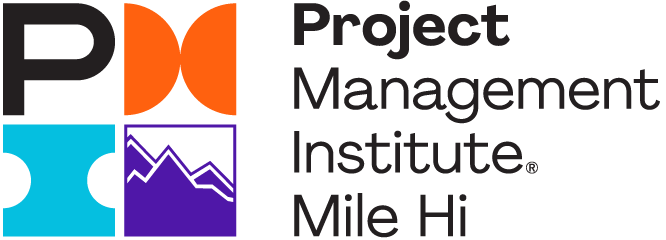18 March 2021 at 08:00PM
6 Steps to OKR Event Orchestration (Part 1)
When teams receive prioritized assignments from leadership, their effectiveness improves. To the high-performing team, few scenarios excite them more than having a clear direction and autonomy to act.
Part 1: How Do Objectives and Key Results Help?
Today Objectives and Key Results (OKR) have become an important tool. Developed by Andy Grove, (of Intel), the framework helps teams across all types of organizations focus on the most important. Selected to align teams to strategic goals, properly defined OKRs answer a very important question.
What Is the Work that Matters Most?
Teams have the opportunity to achieve more when they focus on the most important. Having fewer priorities brings focus. Along with greater focus comes an increased probability of accomplishing the goal. The key benefit of implementing the OKR framework is understanding work in the context of what brings the most value to the organization. Effectively, it provides a team with a mechanism for evaluating new work. Reducing interruptions and performing fewer low-value tasks allow teams to invest their best energy into high-value activities.
The framework is easy to understand and might be what your team(s) need to establish and maintain alignment. It also can complement the Agile framework your organization may already be using.
This article explains how to convert organizational goals into achievable quarterly objectives. It also shows a practical method of bringing them to your agile teams. While the approach won’t fit every circumstance, it will help the reader think deeper about the issues they face while using OKRs on a team.
Step 1: Identifying Key Contributor Groups
Identifying key contributors will inform how best to structure pre-planning activities. For simplicity, there are four groupings; leadership, coordinators, team leaders, and team members.
- Leadership:Leadership refers to those who possess the authority to set direction and make strategic decisions. These are the people we help to execute the organization’s vision. Sound followership is important to achieve alignment. Our ability to make change relies on how effectively we can deliver results. Think of it this way: Achieving results is what we are paid to do.
- Coordinator: Coordinators are the integrators. They are skilled with getting work accomplished through their networking and influencing abilities. Nearly anyone can perform this work if they can organize, communicate, and act with integrity. Typically, a project manager or agile leader plays this role.
- Team Leaders:Team leaders are the positional leaders within each group. If the organization has bureaucracy, they will typically be managers. Teams need them on board and their support. These leaders are responsible for process, procedures, and oversight. All these responsibilities enable the sustainability of the organization. To receive the best effort from these leaders, consider asking senior leadership to send official messages. When they do, their requests are the responsibility of their managers to fulfill.
Anyone who believes they are a leader thinks about how they can give teams the credit they deserve for the work they performed yesterday and for the work they intend to do tomorrow.
- Team members:Team members are the most important group; they are people doing the work. These are the individuals whom the coordinators, leadership, and team leaders are there to serve. Their voice must not be marginalized but amplified by the coordinators. It is the team that will plot the path to success.
Step 2: Aligning the Work to Strategic Objectives
Strategic objectives typically come from the senior leadership team and may cover up to 5 years.
Strategic objectives are statements that indicate what is critical or important in your organizational strategy. ~ Dan Wolf and Brooke Felger
Some may call them themes, priorities, or initiatives. The strategic team typically owns the process of developing, publishing, and driving an understanding of them across the organization. The objectives are higher-level groupings that might include categories such as talent development, client relationships, financial management, or process improvements.
An example of a strategic objective might be something like the following:
“Deliver a remarkable experience to our clients.”
Teams within the organization contribute to the success of the objective by defining key results that can be measured. Key results should be focused on what the team has control over and can commit to for the quarter. Examples of areas where a team might find key results include:
- Higher engagement levels with published content
- Increased speed of delivery
- More interactions with a client during the period
- An increased overall engagement score
Defining a key result that can be controlled by the team and objectively measured takes time. Let’s explore “increasing the speed of delivery.”
Context: Assuming a team takes 1 full week to produce and ship a product, a 20% increase in delivery speed translates into cutting out 1 day from the existing process. The tracking system recording when the order is placed (start date) and when it has been shipped (fulfilled) can be measured. In real terms, an order placed on Monday morning would go out the door at the end of the day Thursday versus Friday.
- Key Result: Increase the speed of delivery by 20% by the end of the quarter.
- Alternative Key Result 1: Reduce fulfillment time by 20% by the end of the quarter.
- Alternative Key Result 2: Reduce fulfillment time from 5 business days to 4 business days by the end of the quarter.
Objectives Are Not Business as Usual (BAU)
Not all important work falls into organizational objectives. This doesn’t mean the work the teams do is not important. On the contrary, BAU makes defining and executing objectives possible. Strategic objectives require more focus outside the BAU, or they won’t be accomplished. Teams have other mechanisms for tracking results for BAU. They are called key performance indicators (KPIs), and most operations groups follow some industry-standard of measure. KPIs can be radiated on a dashboard. Below is an example.

Image created by the author
Key Performance Indicator
A word about KPIs: KPIs are important because they monitor progress. Many organizations place their KPIs on a dashboard and have control levels with upper and lower bounds. If a KPI materially changes, some action may be required.
Find more about orchestration and the final four steps in part 2 of this blog series.
References for this Blog Series
- Doerr, John E. 2018. Measure What Matters. London: Penguin.
- Doerr, John E. https://www.whatmatters.com.
- Niven, Paul R., and Ben Lamorte. 2016. Objectives and Key Results: Driving Focus, Alignment, and Engagement with OKRs. Hoboken: Wiley.
- McChesney, Chris, Sean Covey, and Jim Huling. 2012. The 4 Disciplines of Execution. Glencoe: Free Press.
Additional Resources
Interested in learning more about topics like this one? Check out upcoming events on our chapter calendar. Sign up for one of our upcoming meetings, roundtables, or workshops – a selection of which are virtual. Earn your PDUs through PMI Mile Hi Chapter!
About the Author
Eric Peterson is a creator, coach and servant leader. He writes about leadership, team building, and community. You can find more about him and his work through his website: Shepherd Leadership (shepherdingheart.com).



